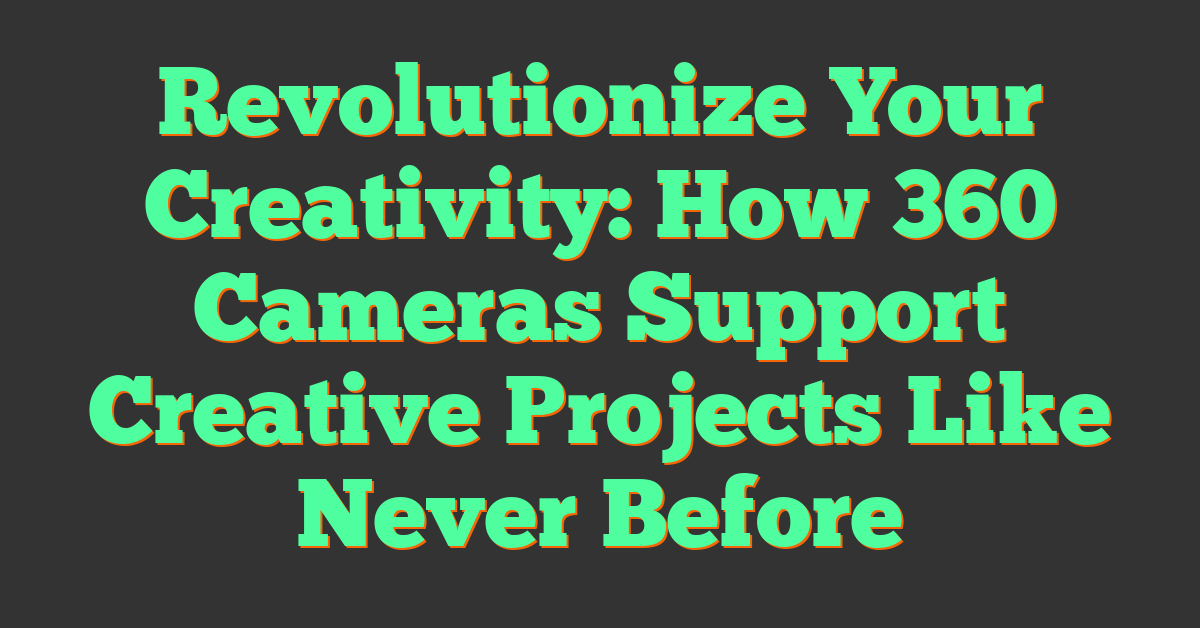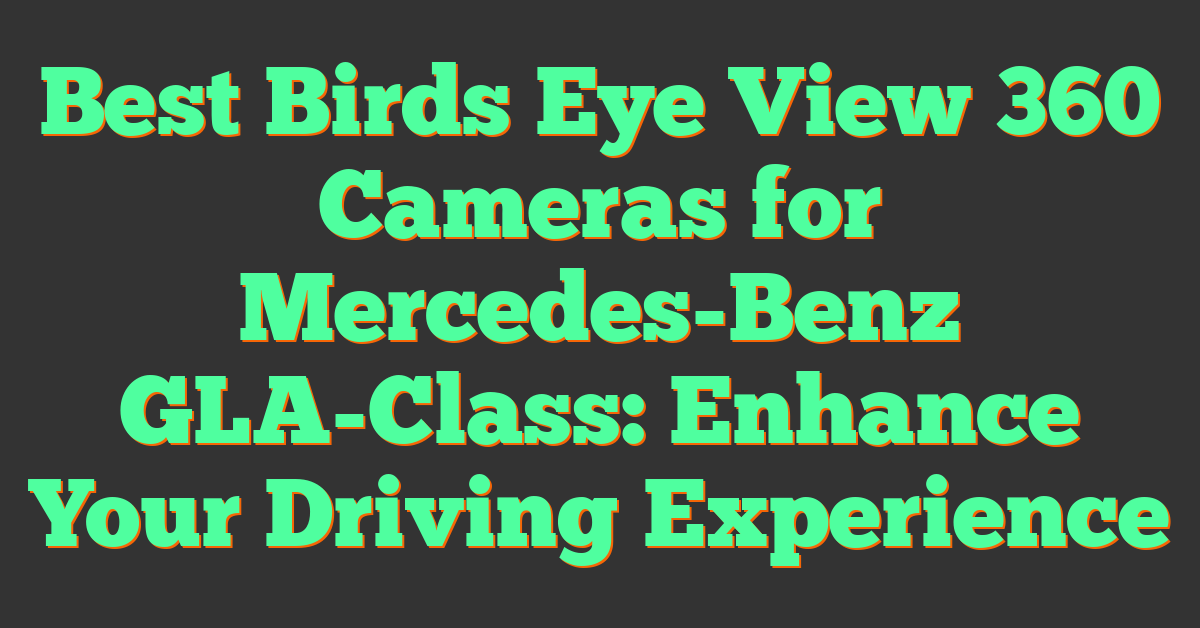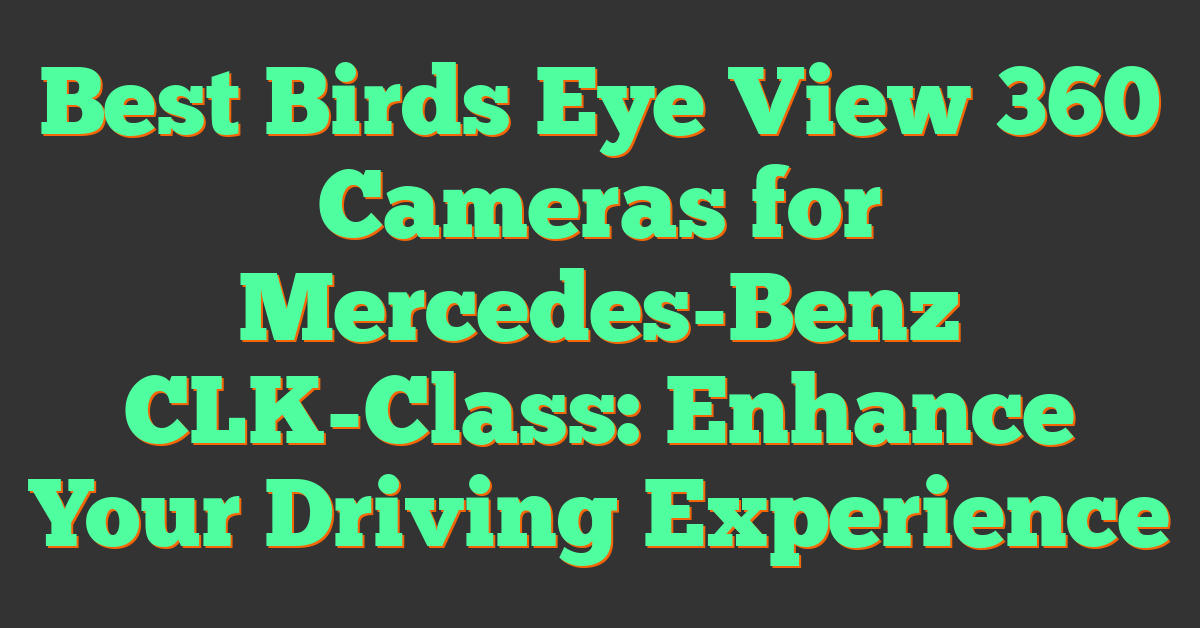Key Takeaways
- 360 cameras revolutionize creative projects by capturing a full spherical view, enabling immersive storytelling and unique perspectives.
- Key features such as high-resolution output, built-in stabilization, and app integration enhance the functionality and quality of 360 content.
- These cameras are versatile, with options catering to beginners, professionals, VR creators, and action enthusiasts.
- 360 tools offer expanded creative possibilities, enabling dynamic outputs like tiny planet effects, VR content, and interactive media.
- They are widely used across industries, including film production, VR experiences, event coverage, and educational simulations.
- While unlocking new artistic potential, 360 cameras come with challenges like technical limitations, budget constraints, and a required learning curve for optimization.
Capturing creativity from every angle has never been easier, thanks to 360 cameras. These innovative tools offer a unique way to immerse audiences in visual storytelling, breaking free from the limitations of traditional photography and videography. Whether you’re crafting a virtual reality experience or creating dynamic content, 360 cameras open up endless possibilities.
From filmmakers to content creators, these devices have become game-changers in how we approach creative projects. They allow me to think beyond the frame and explore new perspectives that truly captivate viewers. Curious about how 360 cameras can elevate your projects? Let’s dive into their incredible potential.
Understanding 360 Cameras
360 cameras redefine how we capture the world by recording everything around a subject in one shot. These tools are indispensable for immersive storytelling and interactive media.
Key Features of 360 Cameras
- 360° Field of View
The defining feature of 360 cameras lies in their ability to capture a full spherical view. With lenses positioned on both sides, they stitch multiple images or videos into seamless 360° content.
- High-Resolution Output
Modern models deliver 5.7K or even higher resolutions. Clearer videos and more detailed photos enhance quality for professional use.
- Stabilization Technology
Built-in stabilization ensures smooth footage even when moving. It’s essential for action shots or handheld use.
- Compact and Portable Designs
Many 360 cameras are lightweight, fitting easily into backpacks. Portability makes them perfect for travel and outdoor projects.
- App and Software Integration
Most come with companion apps for live previews, editing, or sharing. Seamless integration simplifies workflows and accelerates content production.
Types of 360 Cameras
- Consumer-Level Cameras
These are affordable and easy to use. Models like the Insta360 X3 or GoPro Max cater to beginners, offering automatic stitching and mobile app support.
- Professional 360 Cameras
« Underwater 360 Cameras: Best Models for Diving to Capture Stunning Ocean Adventures
How 360 Cameras Enhance Social Media Content and Boost Engagement Like Never Before »
High-end models like the Insta360 Titan focus on advanced specs like 11K resolution. These are crafted for filmmakers working on complex or cinematic projects.
- Specialized VR Cameras
VR-ready cameras support stereoscopic 3D capture. They’re ideal for virtual reality applications, blending immersive content with high engagement.
- Action 360 Cameras
Durable and waterproof options withstand harsh conditions. Examples such as the Ricoh Theta SC2 are great for outdoor enthusiasts and adventure videography.
Benefits of 360 Cameras in Creative Projects
Using 360 cameras can significantly enhance creative projects by broadening storytelling techniques, delivering immersive experiences, and unlocking new artistic possibilities. These tools provide remarkable versatility for photography and videography professionals or enthusiasts.
Enhancing Visual Storytelling
360 cameras redefine how stories are presented. By capturing a complete spherical view, these cameras allow creators to immerse viewers in every scene. For photographers, this means no composition boundaries—viewers can explore the entire frame. Videographers can seamlessly integrate dynamic movements with built-in stabilization, ensuring smooth, cinematic-quality visuals. For example, filming a documentary or travel vlog with a 360 camera offers perspectives that engage audiences far beyond traditional formats.
Immersive Audience Experience
These cameras create unparalleled audience engagement. 360-degree footage places viewers directly into the action, letting them control their viewpoint. Interactive experiences are crucial for virtual reality projects, live event streaming, and experiential marketing. For instance, I’ve used 360 videos in VR tours where viewers could navigate historical landmarks, feeling as if they were physically present. The ability to establish this sense of presence transforms the way audiences consume content.
Expanded Creative Possibilities
360 cameras push creative boundaries, making experimental projects more accessible. The ability to shoot in every direction simultaneously saves time during production and opens opportunities for unique outputs, like reframed videos or tiny planet effects. When producing virtual reality films, these cameras make constructing a true-to-life 3D world achievable. They’re also ideal for creating interactive educational content, such as virtual trainings or scientific simulations.
Applications of 360 Cameras in Different Fields
360 cameras have transformed how we create and consume visual content, offering new perspectives that standard equipment can’t achieve. Their versatility makes them valuable in various industries, enhancing creativity and storytelling techniques.
Film and Video Production
In film and video production, 360 cameras introduce immersive storytelling. Using spherical capture, I can showcase entire surroundings, placing viewers directly into the scene rather than limiting them to a single frame. Cinematic techniques like dynamic panning or zooming allow creators to guide audiences within the filmed environment. I’ve found directors and editors often pair 360 footage with traditional shots to add depth to their narratives. These cameras are excellent for experimental films, music videos, and even nature documentaries.
Virtual Reality Content Creation
360 cameras are at the heart of virtual reality (VR) projects. They create interactive experiences by delivering content suitable for VR headsets. When I worked with a 360 camera manufacturer, I realized the importance of high-resolution spherical footage for VR applications. It lets viewers explore environments—like detailed architectural spaces or simulated training scenarios—by simply looking around. I love how this technology enables a sense of presence, crucial for gaming, VR films, and simulations in education or medical training.
Event Coverage and Live Streaming
360 cameras elevate live event experiences by offering audiences complete immersion. Instead of static angles, viewers can explore the entire event space in real time. I usually see these used during festivals, sports events, or concerts. For instance, I’ve covered exhibitions by live-streaming with 360 cameras, enabling remote viewers to freely navigate the venue. With features like built-in stabilization and real-time streaming capabilities, these cameras ensure engaging and professional-quality footage.
Tips for Using 360 Cameras in Creative Work
Using 360 cameras unlocks unique creative opportunities, but maximizing their potential requires thoughtful execution. I’ve put together a guide to help photographers, videographers, and creators make the most of these innovative tools.
Choosing the Right Camera for Your Project
The first step in 360 content creation is selecting a camera that suits your specific needs. Consumer-level models like the Insta360 X3 or Ricoh Theta X work well for beginners exploring photography or casual projects. For professional-grade productions, cameras like the Insta360 Pro 2 or Z Cam S1 provide advanced options, including RAW output and higher frame rates. For virtual reality applications, focus on VR-ready options such as Kandao Obsidian Pro to meet resolution and stitching precision requirements. When planning high-action shoots, consider durable models like the GoPro Max with robust stabilization and water resistance.
Best Practices for Capturing 360 Content
Capturing quality 360 footage demands pre-planning and careful execution. Place your camera strategically within the environment to ensure all perspectives are useful and avoid obscuring key elements. Minimize stitching errors by keeping the camera balanced in open spaces and away from reflective or overly textured surfaces. Use natural light whenever possible or supplement with external lighting for low-light conditions. Experiment with dynamic angles and movements, but maintain smooth transitions to reduce viewer discomfort in immersive content. Always clean your lenses periodically to eliminate smudges that ruin spherical footage.
Editing and Post-Production Techniques
Processing 360 footage enhances your final composition significantly. Start by importing your footage into editing software like Adobe Premiere Pro, DaVinci Resolve, or dedicated tools like Kandao Studio for stitching adjustments. Correct inconsistencies in stitching by fine-tuning overlaps manually. Apply color grading to unify the visual tone and correct exposure differences across the frame. Add interactive elements like hotspots, text overlays, or audio cues if creating VR content to guide the viewer’s experience. Export in suitable formats, ensuring compatibility with the intended platform, whether it’s YouTube VR, Facebook 360, or standalone VR headsets.
These effective strategies help turn raw 360 footage into polished, engaging visuals that resonate with audiences.
Challenges and Considerations
Using 360 cameras opens a world of creativity, but I often encounter challenges that impact efficiency and quality. Addressing these requires awareness and preparation.
Technical Limitations
360 cameras, though innovative, pose unique technical challenges. Image resolution sometimes lacks the sharpness needed for professional projects, especially in low light. While many cameras offer 4K or higher resolutions, spreading these pixels across a full spherical view can reduce overall clarity. Even advanced stitching algorithms may leave visible seams when capturing complex environments or subjects moving across stitch lines. Battery life is another constraint; capturing 360-degree footage can drain batteries faster than traditional cameras, especially during extended sessions or in cold conditions. Limited storage capacity also arises because the larger file sizes of 360 content quickly fill memory cards.
Budget Constraints
High-quality 360 cameras and accessories can strain budgets. Professional-grade cameras with advanced features like 8K resolution or industry-standard stabilization sometimes cost more than $5,000. On top of that, added expenses like robust editing software for stitching and rendering or specialized rigs for multi-camera setups increase costs further. Even entry-level models, often priced between $300 and $500, may require additional accessories like protective cases or tripods tailored for spherical capture, adding to the overall investment.
Learning Curve
Mastering 360 cameras requires practice and technical understanding. Operating these devices involves familiarizing yourself with unique techniques like ensuring proper placement to reduce distortion. Editing 360 files demands proficiency with specialized software, as traditional video editors can’t handle spherical formats. Incorporating interactive elements or integrating footage into VR workflows adds complexity. When I first started, understanding depth placement and optimizing viewer engagement through immersive angles took considerable effort.
Conclusion
360 cameras have revolutionized the way we approach creative projects, offering unparalleled opportunities to push boundaries and captivate audiences. Their ability to capture immersive, spherical visuals opens doors to innovative storytelling and interactive experiences that were once unimaginable.
While there are challenges to consider, the potential these cameras bring to filmmaking, virtual reality, and live streaming is undeniable. Whether you’re a beginner exploring new creative outlets or a seasoned professional seeking fresh perspectives, 360 cameras can elevate your projects to new heights.
By embracing their capabilities and honing your skills, you can create content that leaves a lasting impression and engages audiences like never before.















